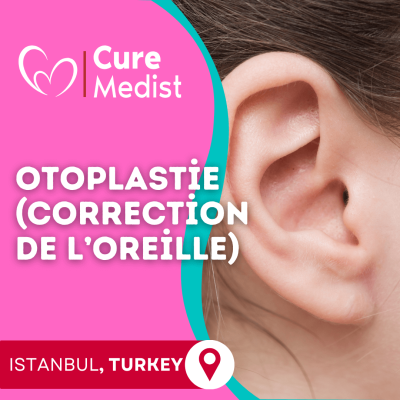Otoplasty, commonly known as ear surgery, is a cosmetic surgical procedure designed to change the shape, position, or size of the ears. It is often performed to correct prominent ears, asymmetry, or deformities resulting from congenital conditions or injury. Here’s a detailed overview:
What is Otoplasty?
Otoplasty is a surgical procedure aimed at improving the appearance of the ears. It can involve:
- Pinning Back Protruding Ears: Bringing the ears closer to the head.
- Reshaping Cartilage: Modifying the ear structure to improve symmetry and appearance.
- Reducing Ear Size: Making overly large ears smaller (also known as macrotia correction).
- Correcting Deformities: Addressing issues such as “lop ear” or “cup ear” where parts of the ear are folded or missing.
Indications for Otoplasty:
- Protruding Ears: Ears that stick out too far from the head.
- Ear Deformities: Congenital deformities such as lop ear, cup ear, or Stahl’s ear.
- Asymmetry: Ears that are uneven in size or shape.
- Repair After Injury: Correcting deformities caused by trauma or previous surgeries.
Procedure:
- Initial Consultation:
- Evaluation: The surgeon assesses the ear structure and discusses the patient’s goals and expectations.
- Medical History: A review of the patient’s medical history and any previous ear surgeries or conditions.
- Preparation:
- Anesthesia: The procedure can be performed under local anesthesia with sedation or general anesthesia, depending on the complexity and patient’s preference.
- Surgical Steps:
- Incisions: Incisions are typically made behind the ears to hide any scars. In some cases, incisions may be made within the inner creases of the ears.
- Cartilage Reshaping: The surgeon reshapes or removes cartilage to achieve the desired contour. Sutures may be used to create or enhance the folds of the ear.
- Positioning: For ears that protrude, the cartilage is repositioned closer to the head using permanent sutures.
- Closure: Incisions are closed with sutures, and the ears are bandaged to support the new shape during initial healing.
- Recovery:
- Initial Healing: Bandages are usually worn for a few days to a week to protect the ears and maintain their new position.
- Pain Management: Pain and discomfort are typically mild and can be managed with prescribed pain medications.
- Follow-Up: The surgeon schedules follow-up visits to monitor healing and remove stitches if necessary.
Benefits:
- Improved Appearance: Enhanced facial symmetry and balance, leading to improved self-confidence and satisfaction with appearance.
- Permanent Results: The changes made during otoplasty are typically long-lasting.
- Minimal Scarring: Incisions are placed in inconspicuous areas, such as behind the ears, to minimize visible scarring.
Candidates:
- Children: Typically, otoplasty is performed on children aged 5 and older, as their ears are fully developed by this age.
- Adults: Healthy adults of any age who are dissatisfied with the appearance of their ears.
- Good Health: Candidates should be in good general health and have realistic expectations about the outcome.
Post-Operative Care:
- Bandages: Keep the bandages clean and dry. Follow the surgeon’s instructions on how long to wear them.
- Sleeping Position: Sleep on your back and avoid pressure on the ears.
- Activity Restrictions: Avoid strenuous activities and contact sports for several weeks.
- Follow-Up Visits: Attend all scheduled follow-up appointments to ensure proper healing and address any concerns.
Otoplasty is a relatively safe and effective procedure for improving the appearance of the ears and boosting self-confidence. It is important to consult with a qualified plastic surgeon to discuss individual goals, potential risks, and the best surgical approach for your needs.





